The Greatest Team in History: How the U.S. Men Dominated the 1976 Olympic Games
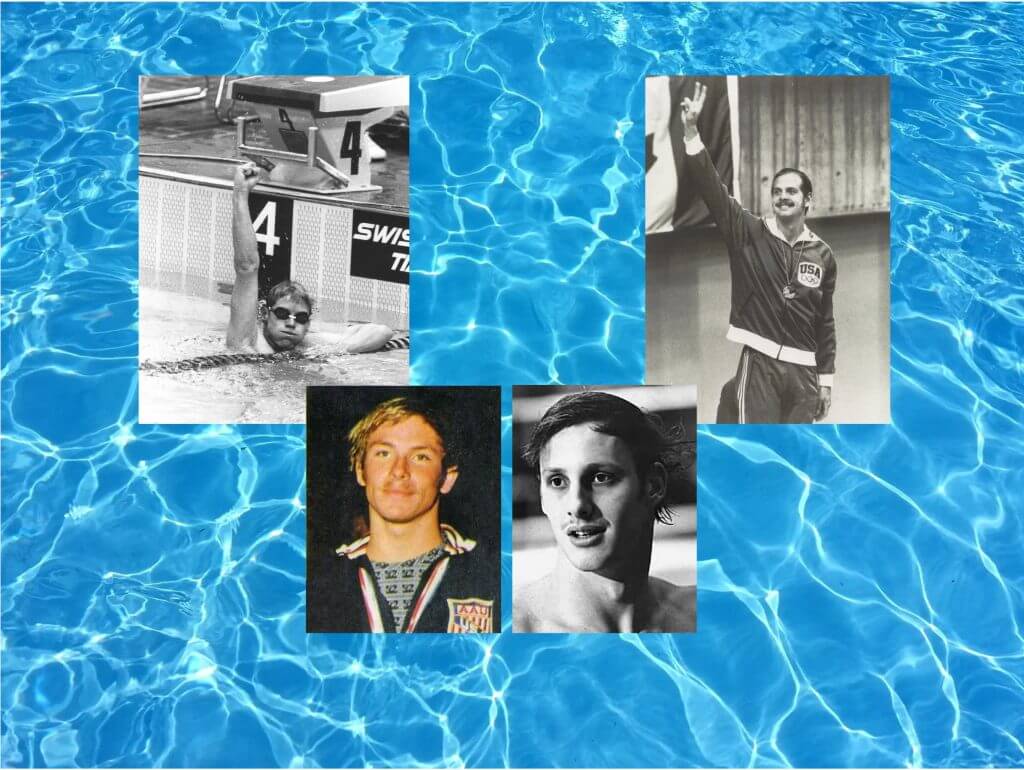
The Greatest Team in History: How the U.S. Dominated the 1976 Olympic Games
The 1927 New York Yankees. The 1995-96 Chicago Bulls. The 1972 Miami Dolphins. The 1976-77 Montreal Canadiens. Each of these teams, defined by championship seasons and star-studded rosters, can make a claim for being its sport’s greatest squad in history. Yet, there will be a handful of arguments against the distinction, someone’s preference not jiving with the consensus.
In the pool, there is no doubt.
At the 1976 Olympic Games in Montreal, Team USA put on a show that hadn’t been seen prior, or since. Led by double individual champions John Naber and Brian Goodell, the United States captured gold medals in 12 of the 13 events contested, a statistic that just begins to characterize the dominance that was on display. Sixteen years before Michael Jordan led NBA players onto the basketball court for the first time in Olympic competition, this squad was the original Dream Team.
When the curtain rose for the 1976 Games, the athletes faced a daunting challenge. The previous Olympiad provided bountiful fireworks in the pool, American Mark Spitz surging to seven gold medals with as many world records, and Australian teenager Shane Gould winning five individual medals, highlighted by three titles. The efforts of Spitz and Gould were generational, and the risk of a letdown was real.
But the 1976 squad the United States sent to Montreal found a way to flourish in its own generational way. While there was no Spitzian performance on an individual basis, Naber and Goodell stood out as solo stars, and the sum of the team’s parts equated to legendary status for this Red, White and Blue roster.
“Nothing could be explained on a physical basis,” said Gary Hall, a team captain alongside Steve Furniss. “It was an emotionally charged team. It led us to compete at a level beyond what we thought we were capable of.”
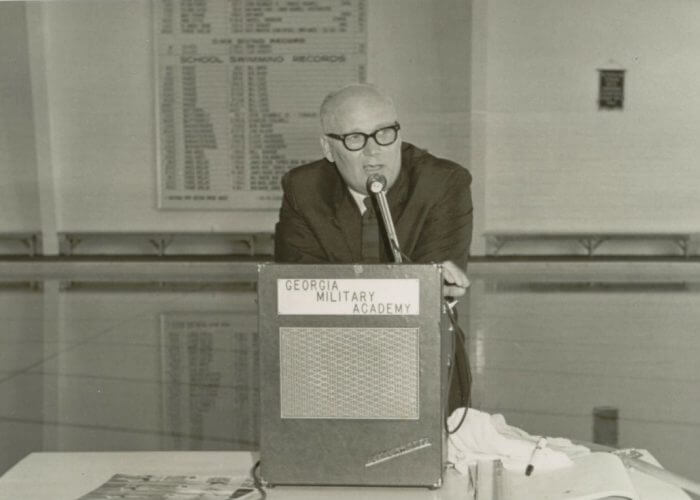
Photo Courtesy: Minor Studio
One of the legendary figures in the sport, Doc Counsilman immediately recognized the special nature of the team he would oversee as the head coach of Team USA in Montreal. For one, several of his Indiana University swimmers, including Jim Montgomery and Hall, dotted the roster. Meanwhile, Counsilman was well aware of the talent he inherited from programs such as the University of Southern California and the Mission Viejo Nadadores, among others.
The key for Counsilman was connecting these rivals as teammates and convincing them to buy into a team approach. On the surface, that objective was not a simple task. At the time, Indiana and USC were fierce rivals on the collegiate scene, and with numerous athletes from the schools on the Team USA roster, how they would blend as teammates was a question. Ultimately, Counsilman succeeded, the Hall of Famer painting a picture ahead of the Olympics of vast success.
“(Counsilman) began the training camp with a pep talk to the team,” Naber said. “He said, ‘Congratulations, gentlemen. I assume that each you have a goal for your performances in Montreal. Allow me to share my goals for this team with you. In the 13 men’s events on the program, I think we can win every one. I believe we can win more medals than the rest of the world combined, and I think we can win more medals than all the other U.S. sports teams combined.’ With those words, he magically lifted our sights from what each of us might do, to what we could accomplish as a team. The backstrokers began to encourage the butterfliers. The sprinters helped the distance men. Medley swimmers pulled for the relays. No one was left behind. Doc also ordered that all club and school T-shirts and jackets be shipped home.”
Counsilman had long been known as a master motivator, and this initial speech to his Olympic squad worked wonders in breaking down walls between rivals and generating a belief that the team was unbeatable. The results from the Games proved – with one exception – that the team indeed was an unstoppable force. Even before Montreal, though, the level of racing was top-notch. As the athletes looked around the deck, they saw their biggest obstacles to Olympic glory. There was no mystery that the difference between a gold medal and a silver medal could be beating a teammate. Yet, Counsilman designed a training camp that kept both competitiveness and camaraderie high. Finding that balance perfectly positioned the team for the Games.
“Workouts were fun, but also intense,” said Naber, who complemented his individual backstroke wins with a silver medal in the 200 freestyle and contributions to both winning relays. “Like events were trained together. George Haines had all the backstrokers, and we trained similar sets on similar sendoffs. Naturally, we were aware of what the others were doing. We often did broken swims and the sums of our times often were faster than the existing world records. There was a sense that this team was firing on all cylinders.”
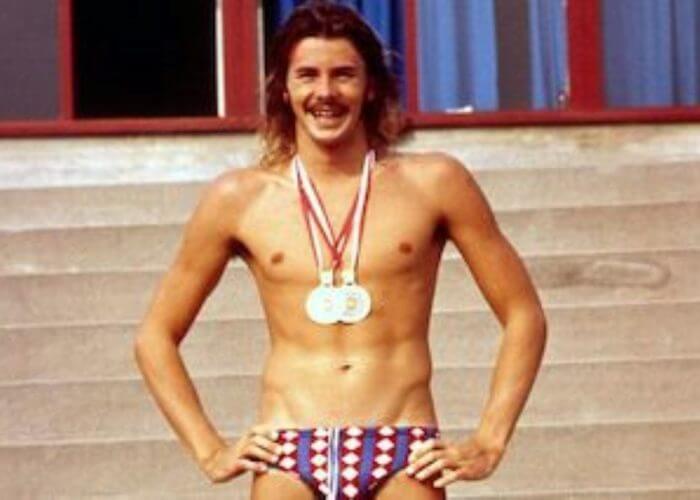
Photo Courtesy:
The belief by Counsilman that his team could win every event in Montreal – whether motivational or wholeheartedly truthful – nearly came to fruition over the week of racing. Only David Wilkie managed to prevent a sweep for the United States, as the British star won the gold medal in the 200-meter breaststroke in a world-record time, Americans John Hencken and Rick Colella taking silver and bronze.
“I wanted to win very badly, and I wasn’t worried at all about the run of American successes,” Wilkie said. “I just swam for myself and for Britain. A great deal of effort and hard work went into the achievement. I’ll always cherish the moment.”
If there was any doubt in team members before the meet started, it was erased on the opening night of competition. The 200 butterfly was the first individual event on the schedule and East Germany’s Roger Pyttel was the favorite for gold. When the swimmers touched the wall and looked to the scoreboard, an American sweep was revealed. Mike Bruner set a world record for the gold medal, with Steve Gregg and Bill Forrester picking up silver and bronze.
Counsilman met with the team each night before finals, armed with two objects. An American flag reminded the swimmers they were racing for their country. A broom was used to motivate the team toward event sweeps.
“After the 200 fly, we all looked at each other and thought, ‘My God! He’s right. We can do it,’” Hall said of Counsilman’s belief. “It was one sweep after another.”
The confidence ran so high from the start that the United States swimmers were willing to wager with the Australians when they came looking for bets on the outcome of the 1500 freestyle. The Aussies were confident that Stephen Holland would win gold, but the U.S. saw no reason to doubt their momentum and backed Goodell and Bobby Hackett, who eventually stood on the top-two steps of the podium, Holland relegated to the bronze medal.
Simply, the Games proved to be a United States rout. Consider the team and individual achievements:
- In addition to winning 12 of the 13 events on the schedule, the United States accounted for 11 world records. Eight individuals won solo gold medals, Naber (100 backstroke/200 backstroke) and Goodell (400 freestyle/1500 freestyle) emerging with a pair of solo crowns. Overall, 19 members of the team earned a place on the medals podium.
- With the Games allowing three athletes per country through 1980, the United States swept the podium in four events – 200 freestyle, 200 backstroke, 100 butterfly and 200 butterfly. Additionally, the United States captured gold and silver in the 100 freestyle, 400 freestyle, 1500 freestyle, 100 backstroke and 400 individual medley.
- Of the 35 medals the United States could have claimed, it tallied 27, or 77 percent.
- In the 11 individual events contested, the United States failed to earn two medals in just the 100 breaststroke, which was won by Hencken ahead of Wilkie and the Soviet Union’s Arvydas Juozaitis.
- In relay action, the 800 freestyle relay prevailed by more than four seconds while the 400 medley relay was triumphant by more than three seconds.
If not for a change in the schedule from the previous Olympiad, the United States could have been more impressive. In a shift from 1972, the International Olympic Committee cut the 200 individual medley and 400 freestyle relay from the program. While the 200 medley could have produced another American sweep, the 400 free relay would have been a foregone conclusion based on the United States’ power and depth among its sprint freestylers.
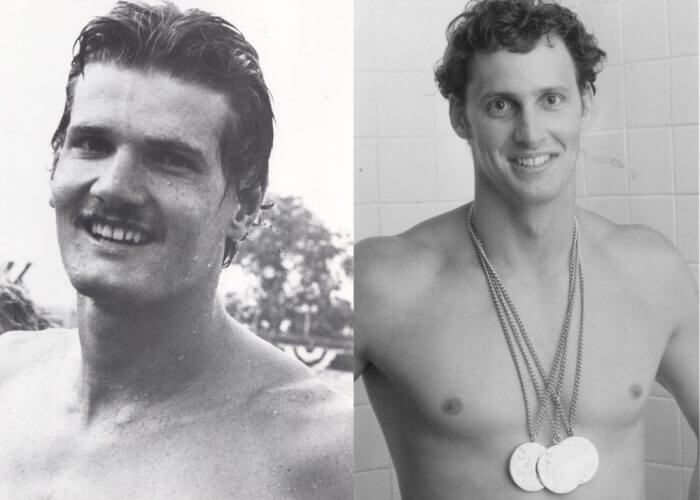
Photo Courtesy:
The 1976 Games also served as a stage for one of the most significant barrier-breaking swims in history. When Montgomery touched the wall to complete his victory in the 100 freestyle, the clock read 49.99, marking the first time a man had covered the event in under 50 seconds. Although South African Jonty Skinner, barred from the Games due to his country’s Apartheid practices, broke that record less than a month later, the fact that Montgomery ventured into unknown territory in Montreal fit perfectly with the virtuoso showing of Team USA.
Montgomery was largely unimpressed with his sub-50 effort, his gold medal the more meaningful achievement. Counsilman, though, told his pupil that the achievement would take on greater significance as time passed.
“He was exactly right,” Montgomery said.
While the United States men shined and enjoyed celebration after celebration, the same could not be said for the American women. Although stacked with an impressive roster of their own, the U.S. ladies ran into the drug-charged women of East Germany. Fueled by the systematic-doping program that was instituted at the government level and ran from the 1970s into the late 1980s, East German women were victorious in 11 of 13 events, posted gold-silver finishes in five events and swept the medals in the 200 butterfly.
The East German dominance left the United States with just seven medals, a dreadful showing for a country accustomed to topping the medals standings. Shirley Babashoff, who won three silver medals behind East German titlists, didn’t mince words in Montreal, and accurately accused the East Germans of performance-enhancing drug use. Babashoff’s willingness to speak out, ahead of the revelation years later that a state-sponsored doping program was at work, earned her condemnation in the press, including the nickname “Surly Shirley.” The backdrop of the American men’s success made the situation that much more difficult to accept, along with the International Olympic Committee’s continued refusal to disqualify the East Germans known to have doped and present medals to the rightful winners.
“From our side of it, the whole issue has been shoved under the carpet,” Babashoff said. “I think it is sad. So many women deserved their medals. They were cheated out of their medals at the Olympics. We would like to get what we earned. We were going for the medals, not the cash. We were amateurs. We worked so hard. We earned it, and it was stolen right in front of everyone’s face, and no one did anything about it. It was like watching a robbery where they just let the crooks go and then say, ‘It’s okay.’”
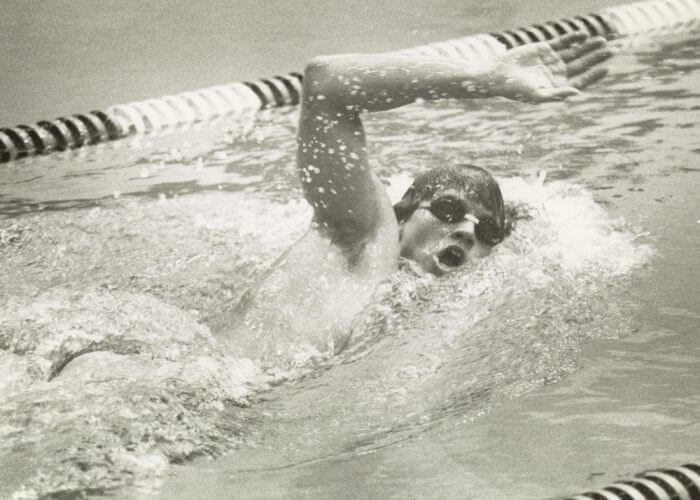
Brian Goodell
The efforts of the 1976 squad were the last for Team USA in Olympic action until 1984, due to the United States’ boycott of the 1980 Games in Moscow over the Soviet Union’s invasion of Afghanistan. That boycott denied a handful of members of the 1976 team from a second Olympic opportunity, most notably Goodell. As a 21-year-old in 1980, Goodell was in peak form and would have defended his gold medals in the 400 freestyle and 1500 freestyle against the Soviet Union’s Vladimir Salnikov. Instead, he watched bitterly as Salnikov won both crowns.
“I would have been in the prime of my career,” Goodell said.
The power of the 1976 United States men’s team also fueled a change in international competition. While nations were still allowed to enter three athletes per event at the 1980 Olympics, the entry limit was reduced to two beginning with the 1984 Games in Los Angeles. The decision hinged on preventing countries like the United States from dominating and sweeping podiums and giving other nations the chance for increased medal representation.
The possibility of a country matching or bettering the achievements of the 1976 United States men’s Olympic Team is minimal. Aside from the two-per-nation participation rule, worldwide depth is more prominent than it was nearly a half-century ago. Regardless of what unfolds in the sport’s future, this 1976 squad will be remembered for its legendary status.
“At the time, our results were not astounding,” Naber said. “They were what we were expecting. Each tipping point turned in our favor, and with each success, our momentum grew. Looking back on it now, I can see how significant it might seem, but at the time we just wanted to win.”
They did. Again, and again.




Yes – some amazing swimmers – lead by Doc – a superb motivator!
ataet
RIP David Wilke. U of Miami FL Hurricane.